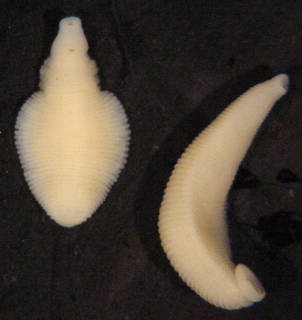Scheldt species taxon details
Helobdella Blanchard, 1896
160018 (urn:lsid:marinespecies.org:taxname:160018)
accepted
Genus
recent only
feminine
Blanchard, Raphael. (1896). Viaggio del dott. A. Borelli nella Republica Argentina e nel Paraguay XXI, Hirudinées. <em>Bollettino dei musei di zoologia ed anatomia comparata della R. Università di Torino.</em> no. 263: 1-24., available online at https://biodiversitylibrary.org/page/11666066
page(s): 4, no figures; note: erected for Hirudo stagnalis Linn as type species, with also Glossiphonia triserialis Blanchard, 1849 included, which is given a long description [details]
page(s): 4, no figures; note: erected for Hirudo stagnalis Linn as type species, with also Glossiphonia triserialis Blanchard, 1849 included, which is given a long description [details]
Read, G.; Fauchald, K. (Ed.) (2025). World Polychaeta Database. Helobdella Blanchard, 1896. Accessed through: VLIZ Consortium Scheldt Species Register at: https://www.scheldemonitor.nl/speciesregister/aphia.php?p=taxdetails&id=160018 on 2025-09-12
VLIZ Consortium. Scheldt Species Register. Helobdella Blanchard, 1896. Accessed at: https://www.scheldemonitor.be/speciesregister/aphia.php?p=taxdetails&id=160018 on 2025-09-12
Date
action
by
2006-09-13 06:47:38Z
changed
Martinez, Olga
original description
Blanchard, Raphael. (1896). Viaggio del dott. A. Borelli nella Republica Argentina e nel Paraguay XXI, Hirudinées. <em>Bollettino dei musei di zoologia ed anatomia comparata della R. Università di Torino.</em> no. 263: 1-24., available online at https://biodiversitylibrary.org/page/11666066
page(s): 4, no figures; note: erected for Hirudo stagnalis Linn as type species, with also Glossiphonia triserialis Blanchard, 1849 included, which is given a long description [details]
additional source Neave, Sheffield Airey. (1939-1996). Nomenclator Zoologicus vol. 1-10 Online. <em>[Online Nomenclator Zoologicus at Checklistbank. Ubio link has gone].</em> , available online at https://www.checklistbank.org/dataset/126539/about [details]
page(s): 4, no figures; note: erected for Hirudo stagnalis Linn as type species, with also Glossiphonia triserialis Blanchard, 1849 included, which is given a long description [details]
additional source Neave, Sheffield Airey. (1939-1996). Nomenclator Zoologicus vol. 1-10 Online. <em>[Online Nomenclator Zoologicus at Checklistbank. Ubio link has gone].</em> , available online at https://www.checklistbank.org/dataset/126539/about [details]
 Present
Present  Inaccurate
Inaccurate  Introduced: alien
Introduced: alien  Containing type locality
Containing type locality

